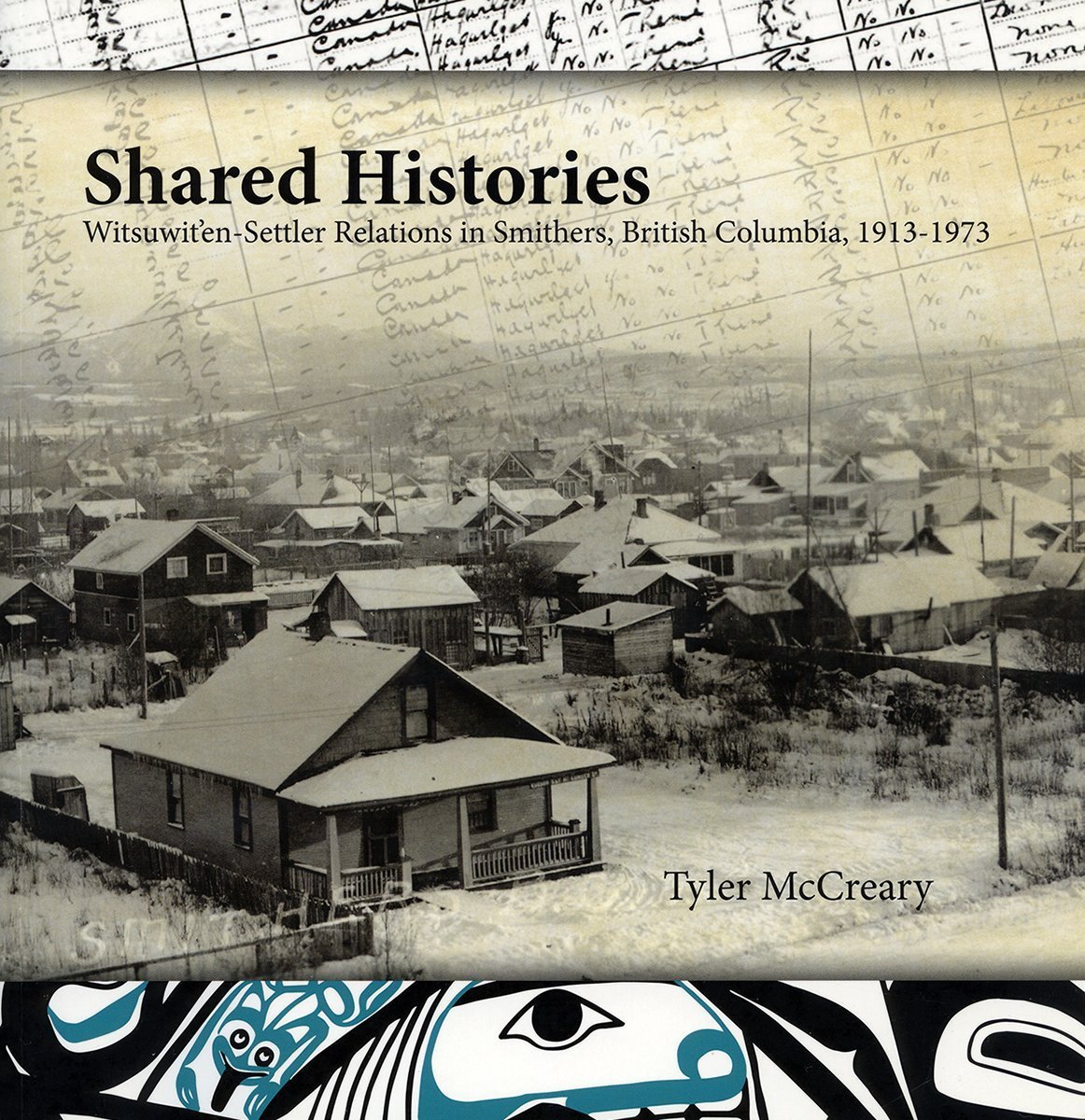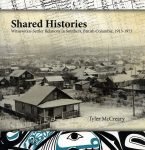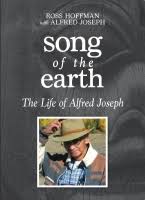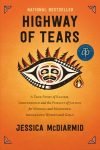
Jeanne Clark History Award
Jeanne Clarke Local History Awards ceremonies drew about 120 people to the Central B.C. Railway and Forestry Museum.
There were four awards presented for publication of history books centring on Northern B.C. One was given to Curt Garland for Uphill Both Ways. The second was for Tyler McCreary’s Shared Histories: Wetswit’en — Settler Relations in Smithers, B.C. The third was to Ross Hoffman and Alfred Joseph for Songs of the Earth. Finally, Jessica McDiarmid won for Highway of Tears: A True Story of Racism, Indifference and the Pursuit of Justice for Missing and Murdered Indigenous Women and Girls.
Four nominees were also recognized and honoured. Carla Funk’s Every Little Scrap and Wonder is about Mennonite family life near Vanderhoof. Three of the nominated books are about rivers: Voices from the Skeena: An Illustrated Oral History, by Robert Budd and Roy Henry Vickers, A Milestone on the Nechako by Trelle Morrow, and As the River Flows: Stories of Life Along the Nechako, by the Nechako Valley Historical Society.
There was also a Service Award, given to The Exploration Place and Mary Gouchie for Mary Gouchie: Hubodulh’eh.
According to Mike Gagel, library-board chair and emcee for the event, the Jeanne Clarke Local History Awardwas established by the Prince George Public Library in 1985, in memory of former chair Jeanne Clarke. She was a founding member of the Prince George Public Library’s Local History Committee, and played a key role in establishing the library’s local history collection.
“This year’s B.C. Heritage Week Theme is ‘Bringing the Past into the Future,'” Gagel said. “Heritage is our legacy from the past, what we live with today and what we pass on to future generations. Our cultural and natural heritage are both irreplaceable sources of life and inspiration, our touchstone, our reference point, and our identity.”
Carolynne Burkholder-James, chair of the board’s Local History Committee, said, “We need to expand the definition of local history and include interactive ways of preserving cultural memory. People want to see themselves reflected in the place where they live and local history is an important way to do that.”
Burkholder-James called upon Katherine Carlson, the Executive Director of the Central B.C. Railway and Forestry Museum. Carlson welcomed the audience to the traditional Territory of the Lheidli T’enneh, and to the Railway and Forestry Museum. She expressed her gratitude for living in so beautiful a place, and for being able to work at the Museum.
She also explained the purpose of the Service Award. It’s granted to an individual or organization for significant contributions to the preservation and promotion of local history. Mary Gouchie: Hubudolh’eh is an historic collaboration by Exploration Place with the late Mary Gouchie. The exhibit ran from Sept. 15, 2019 to Jan. 6, 2020 and focused on the prominent Lheidli T’enneh Elder’s commitment to language revitalization, Carlson said: “Ms. Gouchie played a large role in the revitalization and recovery of the Lheidli T’enneh dialect of Dakelh by assisting to document the written and spoken language.”
Library and museum officials then reviewed the four books nominated for the Publication Award.
As the River Flowsby the Nechako Valley Historical Society, is an illustrated history of Vanderhoof and life along the Nechako. According to Katherine Carlson,
“It spans a long time period dating back before 1910, when there was not even a village in the area known as Khelhkoochek or ‘where Stoney Creek flows into the Nechako,’ until the present day . . . . Highlights include interviews with local First Nations elders, a discussion of local outhouses, articles about local businesses, an in-depth recounting of the Vanderhoof Airshow, and profiles of local personalities including cowboy Rich Hobson, Elders Veronica George and Mary John, Dr. A.W. Mooney, carver Peter Rodseth and veterinarian Walter Wigmore.”
A Milestone on the Nechako describes the evolution of the Nechako Subdivision in the first half of the 20th century, from the time the first settlers arrived to 1910 when George Hammond established a townsite stretching along the bank of the Nechako River. Library Board member Chris Thornhill explained this history and said that there were, subsequently, two more phases of development, the last coming with the BC Housing Corporation and the City setting up utility services and building lots that were quickly sold out by 1960.
Thornhill also described Voices from the Skeena: An Illustrated Oral History, which describes the histories of indigenous settlements and of the arrival of settlers, among them gold seekers, salmon fishers, fur traders, and finally the builders of The Grand Trunk Pacific Railway. He concluded. “At the heart of these stories is the river, weaving together a narrative of a community and its culture.”
Another library board member, Arlene Stevens, said Funk’s book, Every Little Scrap and Wonder, “takes the reader on an exploration of her childhood, life in rural Vanderhoof and growing up in the shadow of Mennonite culture and tradition and how she and those she encountered reconcile their personal beliefs and traditions with that of the infringing outside world.”
 Stevens subsequently turned to the first of the four winners of the Publication Award, Tyler McCreary’s Shared Histories: Witsuwit’en-Settler Relations in Smithers, British Columbia, 1913-1973. She stressed the book’s dynamic interplay of academics (sociology, anthropology and history) with personal anecdotes in explaining the existence and disappearance of the “Indian Town” part of Smithers. That disappearance was physical only; it still exists in the “social gap” between indigenous and settler populations of Smithers.
Stevens subsequently turned to the first of the four winners of the Publication Award, Tyler McCreary’s Shared Histories: Witsuwit’en-Settler Relations in Smithers, British Columbia, 1913-1973. She stressed the book’s dynamic interplay of academics (sociology, anthropology and history) with personal anecdotes in explaining the existence and disappearance of the “Indian Town” part of Smithers. That disappearance was physical only; it still exists in the “social gap” between indigenous and settler populations of Smithers.
 Paul Burry, library director, discussed the significance of Ross Hoffman’s and Alfred Joseph’s Song of the Earth: The Life of Alfred Joseph. The book chronicles the life of Alfred Joseph (Gisdewe), a Witsuwit’en hereditary chief who grew up in Hagwilget, on the Bulkley River near Hazelton. Burry remarked: “In a conversational tone that captures both Joseph’s wit and fondness for storytelling, author Ross Hoffman allows Joseph’s own words, transcribed from a number of one-on-one interviews, to tell this remarkable story.” Part of the story is Joseph’s vital role in the landmark Supreme Court of Canada decision in Delmaguuk vs. British Columbia.
Paul Burry, library director, discussed the significance of Ross Hoffman’s and Alfred Joseph’s Song of the Earth: The Life of Alfred Joseph. The book chronicles the life of Alfred Joseph (Gisdewe), a Witsuwit’en hereditary chief who grew up in Hagwilget, on the Bulkley River near Hazelton. Burry remarked: “In a conversational tone that captures both Joseph’s wit and fondness for storytelling, author Ross Hoffman allows Joseph’s own words, transcribed from a number of one-on-one interviews, to tell this remarkable story.” Part of the story is Joseph’s vital role in the landmark Supreme Court of Canada decision in Delmaguuk vs. British Columbia.
I noted that both these books were published by Creekstone Press out of Smithers. Creekstone had previously published Niel Sterritt’s Mapping My Way Home: A Gitxsan History making for a trilogy of award-winning books (Sterritt won the BC Book Prize) that document settler-indigenous relationships and the politics of negotiating treaties and resource development on unceded land.
Mike Gagel outlined the content of Curt Garland’s Uphill Both Ways: “This book caught my attention because of the cover photo,” he said. “When I moved to Prince George, one of the first things to make an impression on me was the prevalence of Lomak chip trucks on the highways. This book’s cover photo made it difficult for me to read the book in peace because family and friends would also notice that Lomak truck.” Garland’s entrepreneurial activity resulted in more than Lomak; he also created the Hester Creek Estate Winery.
 Al Idiens, past library board member, addressed important issues in Jessica McDiarmid’s Highway of Tears: A True Story of Racism, Indifference and the Pursuit of Justice for Missing and Murdered Indigenous Women and Girls. He noted that the power of the book resides in its interviews with everyone involved: family, friends, investigators, and volunteer searchers: “We feel their losses, frustrations — and anger.” He also praised the book’s exploration of tensions between settlers and indigenous people. Finally, he praised the book’s writing, noting that McDiarmid is a trained journalist who has written for outlets as wide-ranging as the Toronto Star and the Harvard Review: “You will not read a paragraph anywhere in this book and have to wonder what it said.”
Al Idiens, past library board member, addressed important issues in Jessica McDiarmid’s Highway of Tears: A True Story of Racism, Indifference and the Pursuit of Justice for Missing and Murdered Indigenous Women and Girls. He noted that the power of the book resides in its interviews with everyone involved: family, friends, investigators, and volunteer searchers: “We feel their losses, frustrations — and anger.” He also praised the book’s exploration of tensions between settlers and indigenous people. Finally, he praised the book’s writing, noting that McDiarmid is a trained journalist who has written for outlets as wide-ranging as the Toronto Star and the Harvard Review: “You will not read a paragraph anywhere in this book and have to wonder what it said.”
Burkholder-James concluded the ceremony by saying, “Congratulations once more to all our nominees . . . . It was an honour to read your work . . . .Our community is richer because of your contributions.” I’d have congratulate her too, with all the members of the library board, and with Carlson of the Railway Museum. These people aren’t just handing out an award; they’re putting their mouths where their money is, so to speak. In giving their reasons for their nominations, and in providing their personal reviews of these books, they turn their ceremony into a noteworthy and enjoyable event.